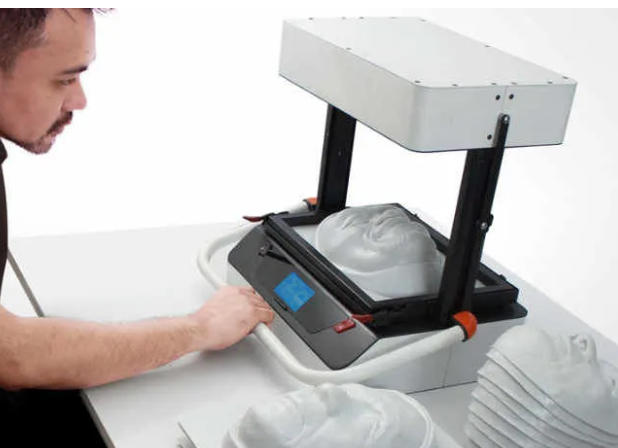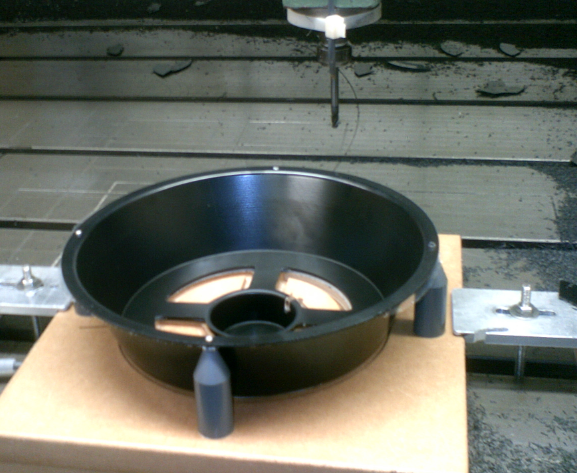Vacuum forming is used for creating diverse products in industries like automotive, medical, consumer goods, design, art, and packaging.
Applications in Industry
Use in Automotive Manufacturing
Vacuum forming is a pivotal process in automotive manufacturing, offering a cost-effective and efficient way to produce a wide range of components. The efficiency of vacuum forming lies in its ability to produce large parts quickly and at a lower cost compared to other methods such as injection molding. For instance, the average production time for a medium-sized car panel is approximately 30 minutes, significantly faster than traditional methods.

Materials used in automotive vacuum forming vary but often include ABS (Acrylonitrile Butadiene Styrene) for its durability and resistance to impact. The use of high-quality materials ensures longevity, with most vacuum-formed components in cars having a lifespan that matches the vehicle’s life, typically around 10 to 15 years.
Another critical aspect is the cost-effectiveness of vacuum forming in automotive manufacturing. The initial investment in molds and tooling is relatively lower than in other forming processes. For example, a typical vacuum forming mold might cost between $2,000 and $10,000, whereas an injection mold can cost upwards of $10,000 to $50,000. This significant cost difference makes vacuum forming a preferred choice, especially for smaller production runs.
Significance in Product Packaging
In the realm of product packaging, vacuum forming is instrumental due to its versatility and efficiency in creating secure, attractive packaging for a variety of products. Commonly used materials include PVC (Polyvinyl Chloride) and PET (Polyethylene Terephthalate), known for their clarity and durability. The speed of production in vacuum forming is a notable advantage, with the ability to produce several thousand packages per hour, depending on the size and complexity.
Vacuum Forming in the Medical Field
The medical field greatly benefits from vacuum forming, especially in areas like medical device manufacturing and the creation of prosthetics and orthotics. This technology’s adaptability, cost-efficiency, and ability to work with biocompatible materials make it a valuable asset in healthcare.
Medical Device Manufacturing
Vacuum forming plays a crucial role in manufacturing a variety of medical devices, such as housing for complex machinery and sterile trays for surgical instruments. The process is highly efficient, reducing both time and cost. For instance, producing a batch of 1000 sterile trays might only take a few hours, significantly quicker than other manufacturing methods.
In terms of cost, vacuum forming offers an economical solution for medical device manufacturing. The production of a custom mold for medical device housing typically costs between $5,000 and $15,000, significantly less than molds for other plastic forming techniques.
Material selection in this area is critical, with a focus on biocompatibility and sterilization compatibility. These materials, while more expensive than those used in other industries, provide essential properties like resistance to hospital cleaners and the ability to withstand high temperatures during sterilization.
Prosthetics and Orthotics
Vacuum forming is transformative in the field of prosthetics and orthotics, providing custom-fitted solutions that enhance comfort and functionality for patients.
Consumer Products and Everyday Uses
Vacuum forming is integral to the production of various consumer products, ranging from household goods and appliances to toys and sporting goods. This manufacturing process stands out for its versatility, cost-effectiveness, and ability to produce durable and aesthetically pleasing items.
Household Goods and Appliances
In the realm of household goods and appliances, vacuum forming is used to create components that are both functional and visually appealing. Products like refrigerator liners, washing machine drums, and vacuum cleaner bodies are commonly produced using this method. The process is favored for its ability to produce large, complex shapes with fine details.
Cost-wise, vacuum forming offers significant savings, especially for large-scale production. For example, producing a batch of 1000 refrigerator liners might cost around $20,000, which is considerably less expensive than other plastic molding techniques like injection molding.
When it comes to materials, ABS plastic is a popular choice for its strength and heat resistance, essential qualities for appliances. These materials contribute to the longevity of the products, with an average lifespan of 5 to 10 years, depending on usage and maintenance.
Toys and Sporting Goods
Vacuum forming has a substantial impact on the toy and sporting goods industry, known for its ability to produce lightweight, durable, and safe products.
The process is highly efficient, allowing for the rapid production of large quantities. This efficiency is crucial in meeting the high demand and seasonal spikes in the toy industry.

Innovative Uses in Design and Art
Vacuum forming, traditionally used in industrial applications, has found its way into the realms of design and art, offering innovative approaches to custom furniture, interior design, and experimental art and sculpture. This process is favored for its versatility, allowing designers and artists to explore unique forms and textures.
Custom Furniture and Interior Design
In the domain of custom furniture and interior design, vacuum forming allows for the creation of unique, tailor-made pieces that blend functionality with artistic expression. Designers often use this method to produce intricate, curvilinear forms that would be challenging to create using traditional woodworking or metalworking techniques.
The cost of creating custom furniture using vacuum forming can vary widely, depending on the size, complexity, and the type of material used. For a bespoke chair or table, the production cost might range from $500 to $2,000, offering an affordable alternative to more expensive custom furniture-making processes.
Material choice in this field is diverse, ranging from traditional plastics to more innovative, eco-friendly options like recycled plastics or biodegradable materials. These materials not only contribute to the aesthetic and functionality of the furniture but also address environmental concerns.
Experimental Art and Sculpture
In the world of experimental art and sculpture, it has opened new avenues for artists to experiment with three-dimensional forms. This technique allows artists to mold plastics into complex shapes, creating dynamic and intriguing artworks.




